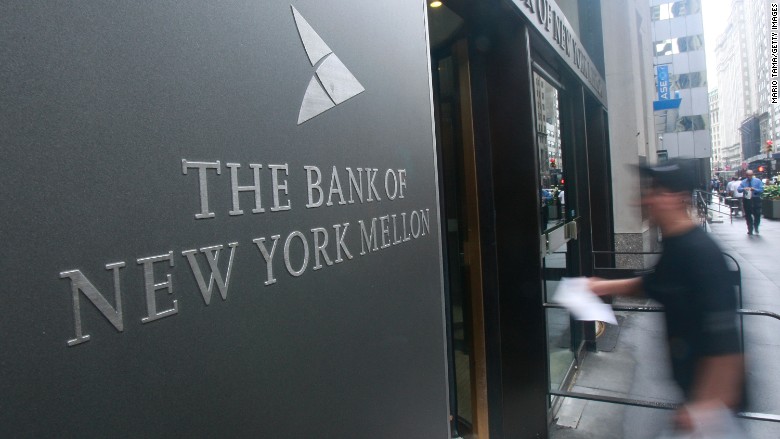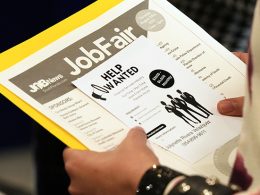by Jurrien Timmer, Director of Global Macro, Fidelity Management & Research Company
Up and to the Right
Equities continued to plow ahead last week, recovering from the brief growth scare a week earlier following the lackluster jobs report. The S&P 500 index continues on its V-shaped recovery track and remains in the running for the fastest and strongest recovery ever following a 20% drawdown.

Barbelled Bull
As impressive as the recovery has been since the tariff tantrum in April, the action overseas has been even stronger. Broadenings are good of course, even when they are as unusual as this one is. Beyond the mega growers in the US, the current broadening has skipped over large swaths of the US market and has gone overseas to international equities. It’s a barbell-shaped bull.

Mega Mag 7
The juggernaut that is the Mag 7 continued to power the bull market train forward this week, with the M7 index finally besting its all-time high from February. The earnings story has been powerful and has carried most of the load. The payout (dividends plus buybacks) for the M7 has grown from $254 in 2023 to $437 in 2025. The AI boom is real, and it’s showing up in the data.

The broader market is putting in a more muted performance, with only half the stocks in the S&P 500 above their 50-day moving average. But the equal-weighted index (SPW) is sitting just below its all-time highs, so there is no big divergence so far.

Follow the Liquidity
Outside the Mag 7, the real action is not in the broad US market but across the oceans in Europe, Japan, and emerging markets. The global liquidity cycle is on the rise, and equities like liquidity.

The Market Cycle
A snapshot of the US market cycle since the cyclical bottom was formed in October 2022 shows how valuation-driven this rally has been. Since the October 2022 low, the S&P 500 price index is up 84%, earnings are up 18%, and the P/E-multiple is up 48%. It’s normal for valuations to lead during the first year or two of a bull market (as price anticipates earnings), so seeing the multiple still lead after 34 months is unusual.

From Markdowns to Markups
Earnings are pulling their weight, with Q2 earnings season producing a larger than average bounce. With 483 companies reporting, 81% have beaten estimates by an average of 843 bps.

The tariff-related earnings markdowns in April have giving way to markups, as the fear of falling margins meets the Big Beautiful Bill (BBB)and a massive AI boom. Who wins this battle? So far it’s the latter.

You have to squint to see the subtle trend change, but below you can see that the 2025 estimate fell harder than normal back in the spring and is now rising when it normally would be falling. Fundamentally we continue to see cross currents in terms of who will pay for the cost of tariffs and to what extend this will be offset by the fiscal impulse from the BBB.

Seasonality
Seasonally we are now in the weakest part of the year (until mid-October). As always, the qualifier for these indicators is that they work “all else being equal,” and this being 2025, nothing else is equal!

The Fed and Rates
With expectations for a September rate cut now at 90%, the bond market remains very calm. The forward curve now predicts a terminal rate near 3% in 2026.

Secular Context
The leadership is now as top-heavy as it was in 1963, with top 10 stocks comprising 35% of the US market cap and the top 50 making up 57%. The parallel to the 1960’s is compelling, given the compelling analog to the fiscal/monetary landscape as well as the secular trend.

A Whimper or a Bang?
There is of course no question that we have been in a secular bull market for many years (since 2009 by my count). The question is whether it will eventually end with a whimper or a bang. The 1982-2000 secular bull ended with a loud bang in the form of the dot.combubble, while the 1949-1968 bull ended with a series of modest new highs followed by increasingly large drawdowns. You can see that nuance in the chart below.

So far, the current secular trend seems to be following the 1960’s analog more than the late 1990’s, and the CAPE model suggest that over the next few years the return profile will accelerate before the secular wave crests.

While this secular bull is getting long in the tooth at 16 years old, the analog to both the 1982-2000 and 1949-1968 super-cycles shows that there could be a few more innings left, pushing the market to ever new highs. Per the regression trend lines below the two historical analogs are a very close fit to today’s market.

Go East, and West
For many years while US equities dominated the global landscape, the relative valuation discount of non-US equities was tempting but lacking a catalyst in the form of improving fundamentals. That has most definitely changed in recent months, at least for non-US developed market equities.
Below we have a scatterplot of the MSCI USA index, EAFE, and EM. The forward P/E ratio is on the vertical axis and the payout ratio (dividends plus buybacks as a percent of earnings) is on the horizontal. The size of the dots represents the 5-year growth rate of that payout. Per the discounted cash flow mode, the payout (what the shareholder gets) is more important that the earnings (what the company makes).

As of July 2025, the MSCI USA index trades at a 22.5x forward P/E, has produced a 5-year payout CAGR of 6%, and sports a payout ratio of 76%. The MSCI EAFE index, on the other hand, has 77% payout ratio, a 10% CAGR, and only a 14.5x multiple. That is stiff competition! The MSCI EM index, however, has a 13.2x multiple, 5% growth and a mere 46% payout ratio. EAFE wins the battle in my book.
The next chart highlights the impressive catch-up by international developed equities in the past year or so. The payout is booming, as is the payout ratio. Today, investors can buy competitive fundamentals at two-thirds of the price.

The global broadening is of course good news for investors, stock pickers, and asset allocators, who now have a bigger pond to fish in, while navigating a top-heavy US market landscape. My sense is that this will be a lasting trend that takes us from figuring out a way to capture the SPX 493 or equal-weighted index to just riding the cap-weighted S&P 500 while diversifying internationally.

1188536.32.0
Copyright © Fidelity Management & Research Company












